star
Latest
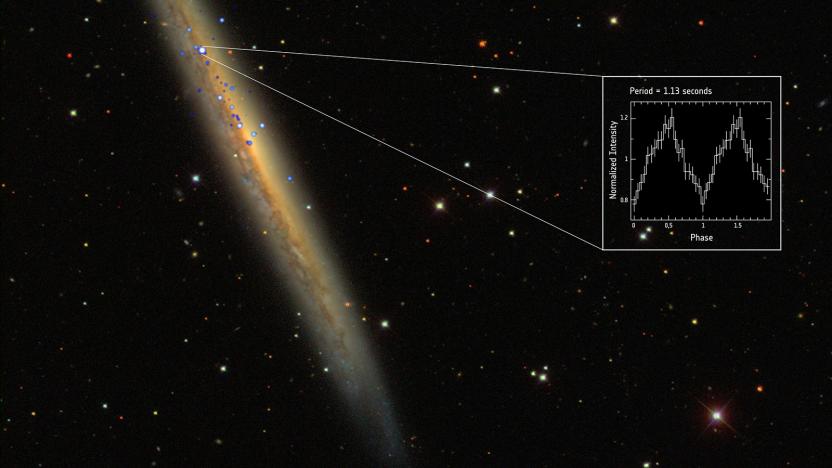
Newly discovered star remnants are the brightest ever seen
The European Space Agency's XMM-Newton X-ray observatory discovered a pulsar that's a thousand times brighter than researchers had previously thought possible. Officially dubbed NGC 5907 X-1, the pulsar is 10 times brighter than the previous record holder. This means that in one second it puts out the same amount of energy our Sun releases during the course of 3.5 years. The pulsar, or spinning remains of what used to be a massive star, is also the furthest ever observed. Its light traveled 50 million light years before the spacecraft noticed it.

Dwarf star's atmosphere holds the ingredients for life
One of the biggest questions in the search for life in the universe is a simple one: how common are the ingredients needed to make life-giving planets? They might be more widespread than you think. Astronomers have discovered that a white dwarf star in the Boötes constellation, WD 1425+540, has an atmosphere chock full of the carbon, hydrogen, nitrogen and oxygen needed for life as we know it. The researchers believe that the star picked up these elements after ripping up a small rock-and-water planet when it veered too close. The finding suggests that rocky planets like Earth don't need to be born with life-giving material -- even a "dry" example orbiting close to its star might pick up those substances through one of these stellar impacts.

Gamma ray telescope spots ancient, intense black holes
NASA's Fermi gamma ray telescope has been working overtime, it seems. Scientists using the instrument have spotted extreme astronomical phenomenon both at the far edge of the universe and close to home. They've detected the farthest known blazars, or galaxies whose central black holes are so massive (over 1 million times the Sun's mass) that they emit extremely intense light in every spectrum, including gamma rays. The oldest example existed just 1.4 billion years after the Big Bang -- ancient compared to the previous record-setter, which was visible "just" 2.1 billion years after the birth of the universe.
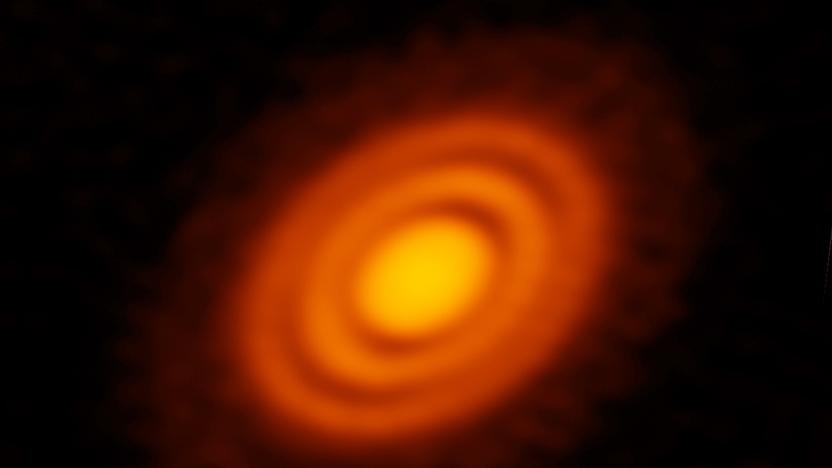
Exoplanets may have carved dusty tracks around a young star
Astronomers have spotted what they believe are two Saturn-sized planets carving "tracks" through a young star's protoplanetary disk. Although scientists have found plenty of exoplanets ranging from gas giants like Jupiter to rocky, Earth-like worlds, most orbit mature stars. However, the not-yet-fully-formed worlds imaged by the ALMA telescope array show that stars can possibly spawn planets at an earlier age than previously thought.

President Obama calls for a plan to deal with extreme space weather
As President Barack Obama's administration enters its final stages, he's paying more attention to what's going on way, way above us than expected. Just days after the president outlined his vision for landing humans on Mars by the 2030s, he issued an executive order calling for a plan that would help the country -- and the systems that power it -- cope with seriously bad space weather.
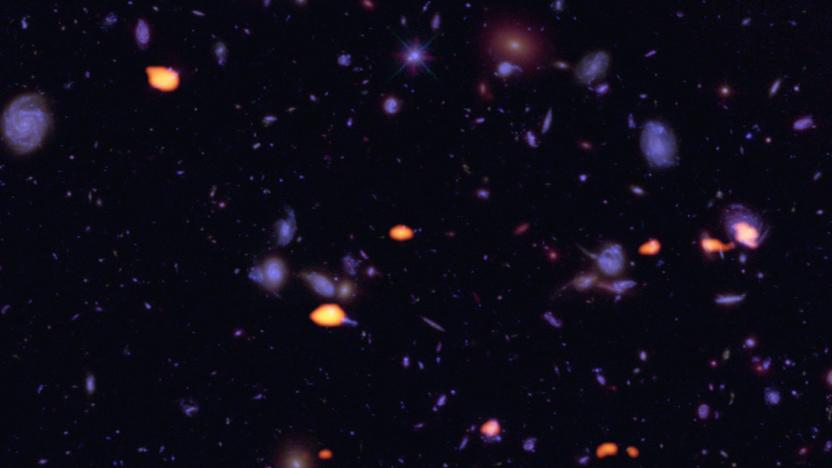
Hubble study helps explain the heyday of galaxy formation
The Hubble Space Telescope still isn't done giving up secrets of the early universe. Researchers using the Atacama Large Millimeter/submillimeter Array (ALMA) have discovered that a patch of 10 billion-year-old galaxies in Hubble's Ultra Deep Field view holds gas that helps explain the "Golden Age" of galaxy and star formation. This first completely "blind" (that is, not expecting anything) 3D millimeter wavelength search of the old universe turned up galaxies with an abundance of carbon monoxide, a hint that they were rich in the molecular gas key to creating stars.
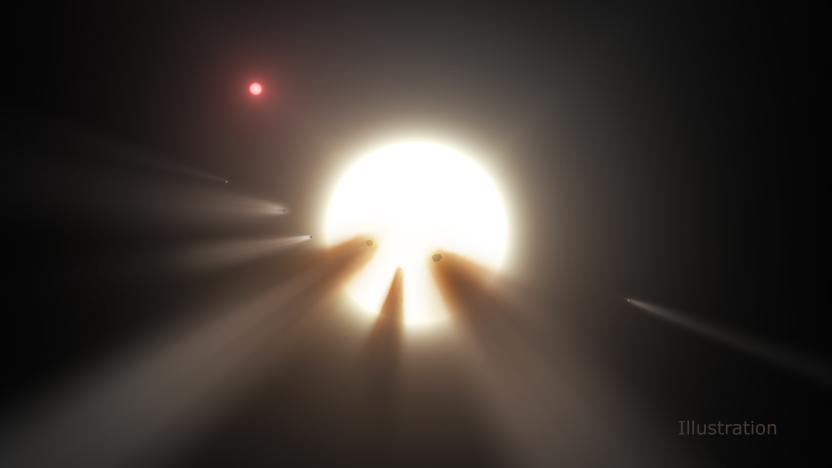
We still don't know why 'alien megastructure' star is dimming
Astronomers' favorite mysterious stellar object, which may or may not be surrounded by an "alien megastructure", remains unexplained. A reason for the flickering light emitted by the star known as KIC 8462852 continues to evade the scientific community. But scientists have taken a closer look at the star's brightness levels, and it's official: the amount of light coming out of it has decreased by three percent over four years. Further, it's only happening to this one sun and none of its neighbors. The plot continues to thicken.
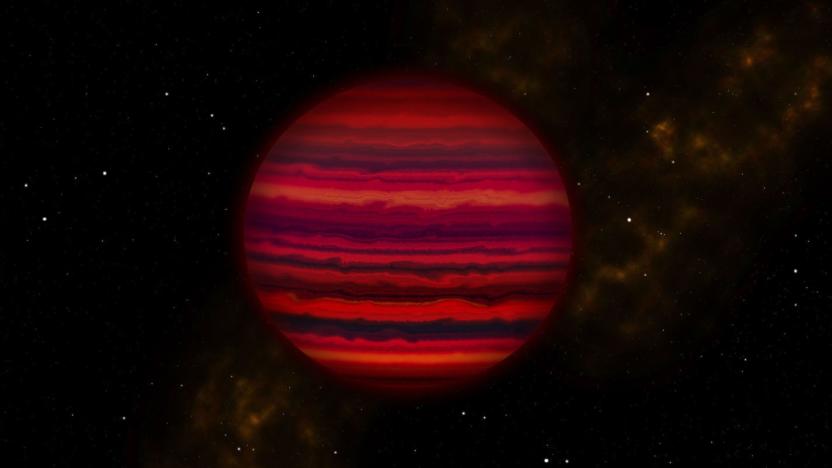
Scientists find the first water clouds beyond the Solar System
At last, astronomers have found evidence of watery clouds beyond our home star... only they're not hovering around a planet, like you might expect. UC Santa Cruz-led researchers have discovered signs of water vapor clouds around WISE 0855, a brown dwarf (that is, gas and dust that failed to become a star) a relatively close 7.2 light years away. The team had to use tricky infrared spectrum analysis to spot signs of water absorption around the dwarf, which is so cold and faint (-10F) that visible light and near-infrared studies wouldn't work.
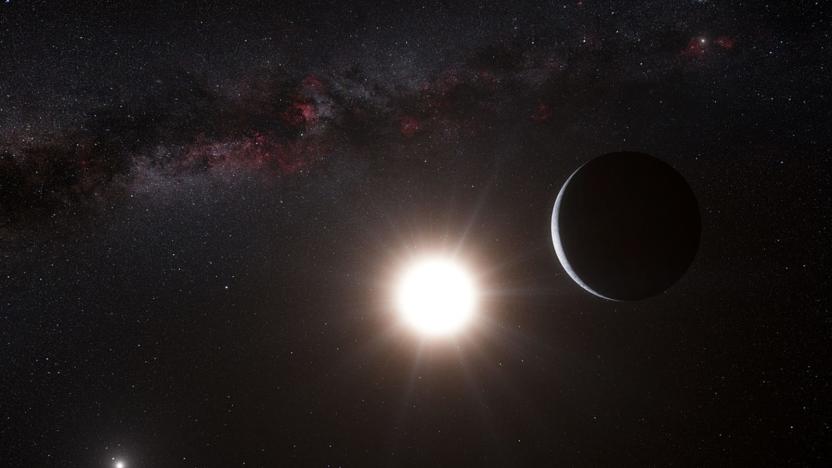
Astronomers scan for disappearing stars
Scientists are adept at spotting stars, even very old ones. But what about stars that disappear? A handful of researchers, led by Uppsala University's Beatriz Villarroel, aims to find out. They've been comparing sky surveys to see if any light sources (usually stars) have disappeared between these scans. Out of the 300,000 sources in the study, they've found one that appears to have vanished without a trace.
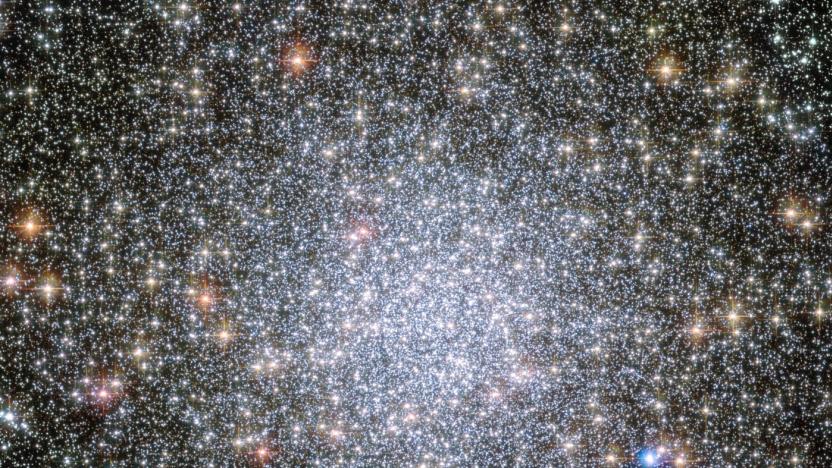
Listen to the sounds of the Milky Way galaxy's oldest stars
You probably won't get to visit the most ancient stars in humanity's home galaxy, but you'll at least get to hear what they sounded like when they were young. University of Birmingham researchers have detected the acoustic oscillations of Milky Way stars that are about 13 billion years old, or not much younger than the galaxy itself. The trick was to use asteroseismology, or measuring the tiny pulses in brightness triggered by sound caught inside those stars. As you'll hear at the source link, they're not exactly hot summer jams -- these are ominous tones that are more likely to remind you of an emergency broadcast signal than anything else.

ICYMI: RoboDoc beats humans, touchpad skin and more
#fivemin-widget-blogsmith-image-682998{display:none;} .cke_show_borders #fivemin-widget-blogsmith-image-682998, #postcontentcontainer #fivemin-widget-blogsmith-image-682998{width:570px;display:block;} try{document.getElementById("fivemin-widget-blogsmith-image-682998").style.display="none";}catch(e){} Today on In Case You Missed It: The Smart Tissue Autonomous Robot performed surgery on its own (with a human standing by) and turns out, makes such fine, consistent stitches that it actually beats those done by real counterparts. Carnegie Mellon created a wristwatch display and ring system that makes the skin of your forearm a touch pad to interact with the screen. And McDonald's made something called the McTrax placemat in the Netherland's and music folk everywhere want one, asap. We also rounded up the week's big headlines in TL;DR and hope your weekend conversations touch on whether the UAE should build an artificial mountain to get more rain. As always, please share any great tech or science videos you find by using the #ICYMI hashtag on Twitter for @mskerryd.
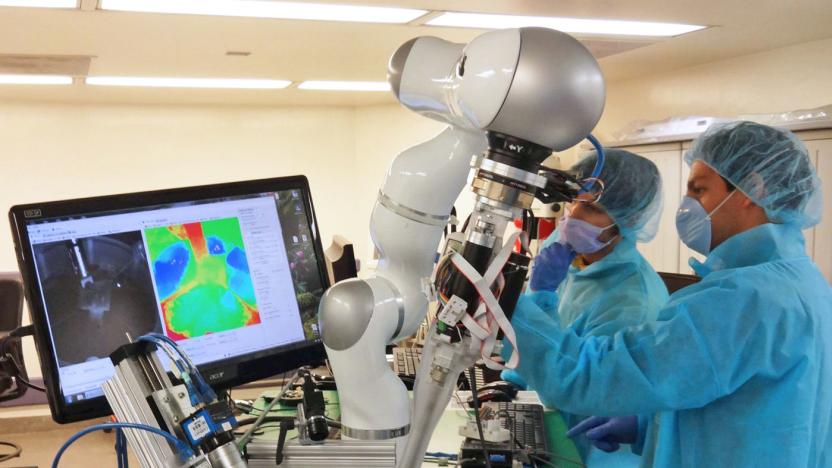
Surgical robot could sew you up better than a doctor
Surgical teams aren't fond of robots that could replace them (just ask Johnson & Johnson), but that doesn't mean they're completely against mechanical helpers. Children's National Medical Center and Johns Hopkins University recently tested a Smart Tissue Autonomous Robot (STAR) arm during experimental bowel surgery on anesthetized pigs. The machine only handled suturing by itself, but excelled at that job -- it sewed more consistently than veteran doctors and even other robotic assistants. Its edge comes from using a depth-savvy light field camera to find fluorescent markers placed inside the tissue, helping it spot folds that would normally stay hidden.
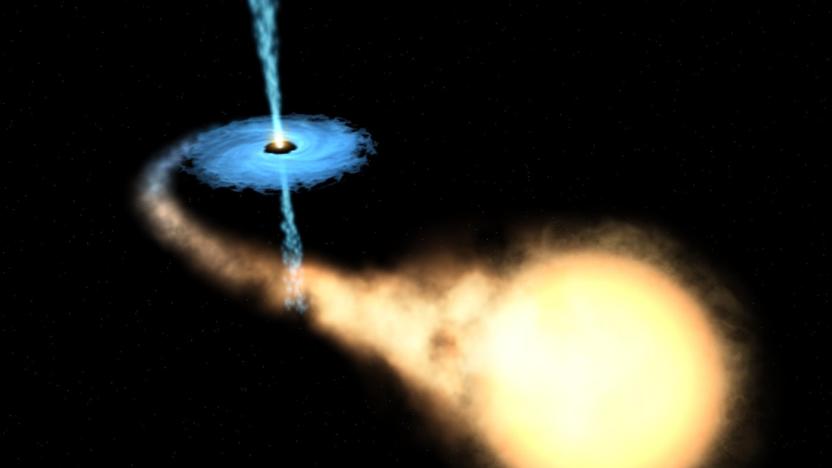
Two black holes are defying the limits of science
Even astrophysicists are occasionally surprised at what they find in the cosmos. University of Cambridge researchers have discovered that two black holes are consuming their companion stars at rates much faster than currently established limits would allow -- so fast, in fact, that the gas is ejecting at a quarter of the speed of light. To top things off, this is the first time that scientists have seen winds flowing away from ultra-luminous (and currently mysterious) X-ray sources.
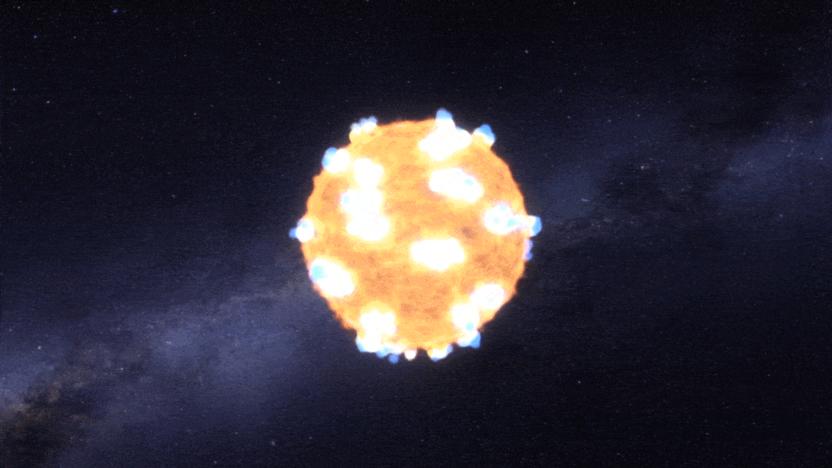
NASA catches the flash of a supernova for the first time
Spotting supernovae is relatively easy, but witnessing the immediate aftermath of those exploding stars? That's hard -- however, NASA has managed just that. By using the Kepler space telescope to capture the light of 500 galaxy every 30 minutes for 3 years, the agency caught the flash of a supernova's initial shockwave as a red supergiant (KSN 2011d) met its grisly end. That's no mean feat when this early burst only lasted roughly 20 minutes, and the target star was a whopping 1.2 billion light years away.

Hubble shows some of the galaxy's biggest, brightest stars
The Hubble Space Telescope still isn't done providing insights and pretty pictures -- far from it. Researchers have published a composite Hubble image showing the massive, extra-bright stars of the Trumpler 14 cluster, which sits 8,000 light-years away in the Carina Nebula. It's dazzling, of course (NASA likens the stars to diamonds), but it's also a reminder that some celestial bodies lead short, intense lives. Many of the stars you see here are young (under 500,000 years old) blue-white variants burning so fiercely that they'll explode as supernovae within a few million years, rather than die relatively quietly over billions of years.

Comets don't explain the strange 'alien megastructure' star
And here we thought that the mystery of the "alien megastructure" star was all sewn up. Researcher Bradley Schaefer has determined that the most plausible explanation for KIC 8462852's unusual dimming, a swarm of comets, doesn't really hold up. You see, historical data shows that the star's light has been fading for at least a century -- comets wouldn't produce that kind of behavior. That theory was never strong in the first place, but these latest findings effectively rule it out.

Astronomers spot a star with a Jupiter-like storm
Unfathomably large storms aren't reserved solely for gas giants like Jupiter... they can exist on stars, too. Astronomers using the Kepler and Spitzer space telescopes have discovered a giant storm on W1906+40, a brown dwarf cool enough ("just" 3,500F) to have clouds full of minerals. It's so large that you could fit thee Earths within its volume, and it's been raging for years. In fact, it wasn't until scientists used Spitzer's infrared detection that they even realized that it wasn't just a massive sunspot.

Black hole ejects massive energy jet after devouring a star
For the first time, scientists have caught a glimpse of a black hole ejecting a hot "flare" of matter after devouring a star the size of our sun. The discovery was made thanks to the quick action of of scientists from John Hopkins University, who worked in conjunction with a team from the University of Oxford. Hubble fellow Sjoert van Velzen from Hopkins heard last year that Ohio State U researchers had spotted a transient star that was caught in the gravitational pull of a black hole some 300 million light years away. In theory, the event (dubbed ASASSN-14li) would result in a "tidal disruption" of the star, resulting in a hot flare burst energy jet emitted by the supermassive black hole.

That star's 'alien megastructure' is likely just a swarm of comets
Occam's Razor apparently holds true everywhere, even in the farthest reaches of space. While researchers speculated that star KIC 8462852's mysterious dimming might be the result of alien megastructures, NASA is about to publish evidence supporting the theory that it's really just a swarm of comets. Based on the strange dimming and the moderate infrared light levels, you may be looking at a pack of cold comets on a "very long, eccentric" orbit. If so, the strange signatures over the years reflect different-size comets passing around the star.

Astronomers find the first planet known to orbit a white dwarf
It's virtually certain that some white dwarfs still have planets in orbit despite their violent histories, but seeing those planets has proven difficult... at least, until now. Astronomers using the Kepler space observatory have spotted a planet circling around WD 1145+017, a white dwarf 570 light years away. Not that it's in great shape, mind you. The unusual light signature from the dying star hints that the planet is disintegrating under the star's gravitational pressure, leaving behind a giant dust cloud. Researchers suspect that it fell into its fatal orbit after the star's rapid change in mass triggered a planetary collision.





